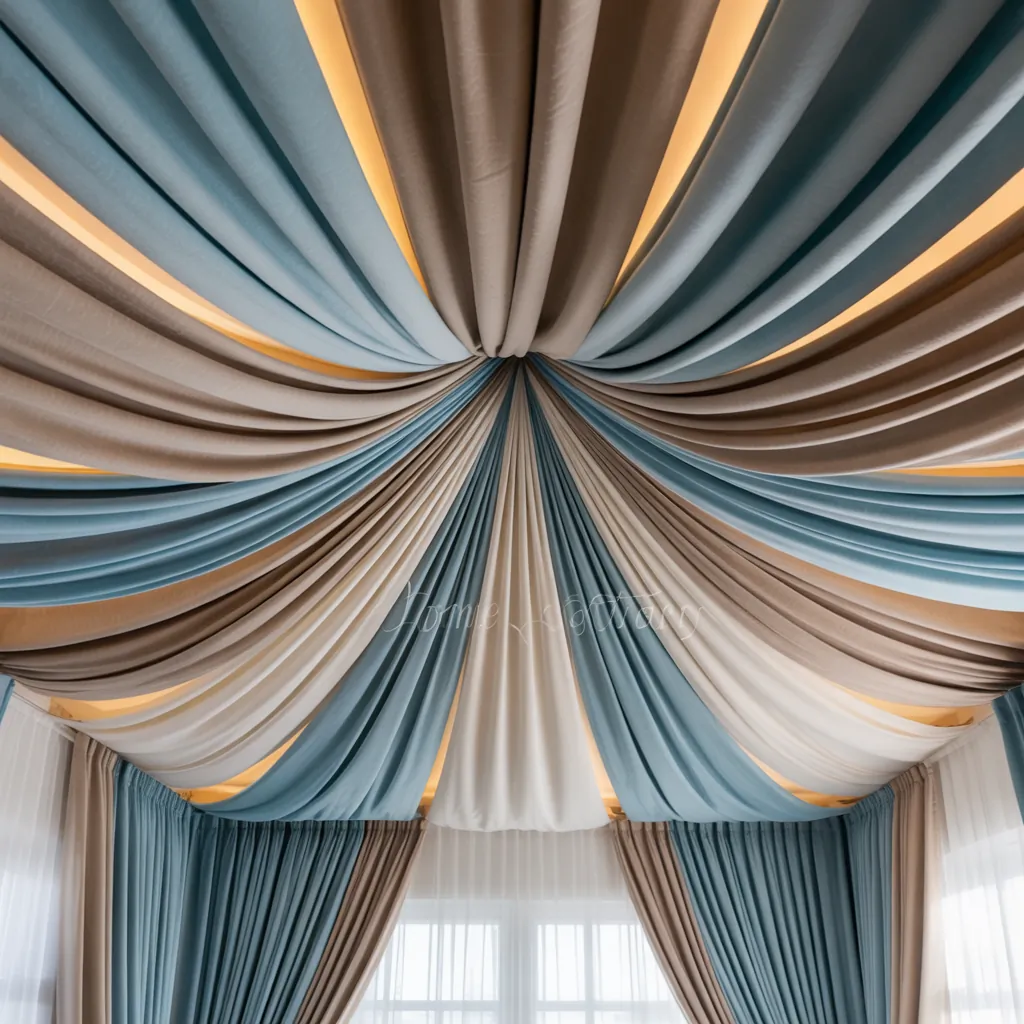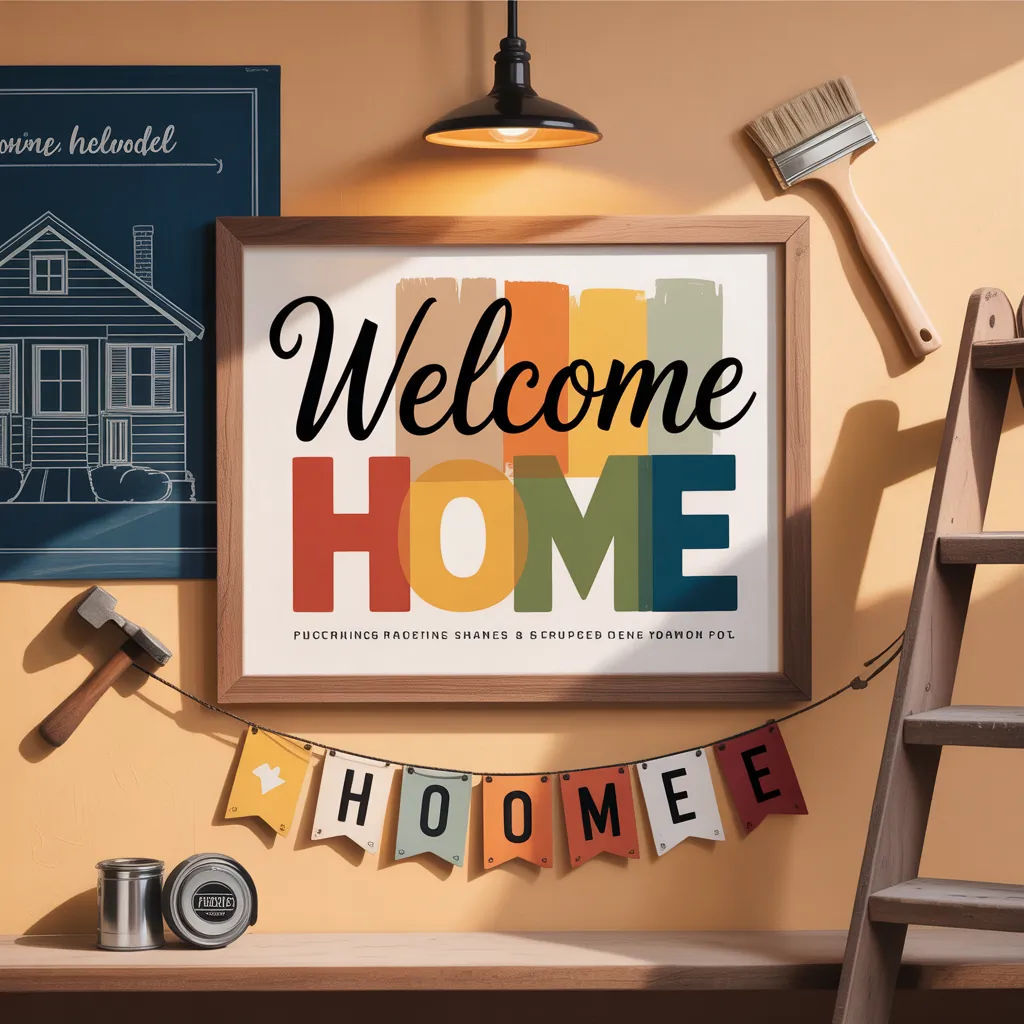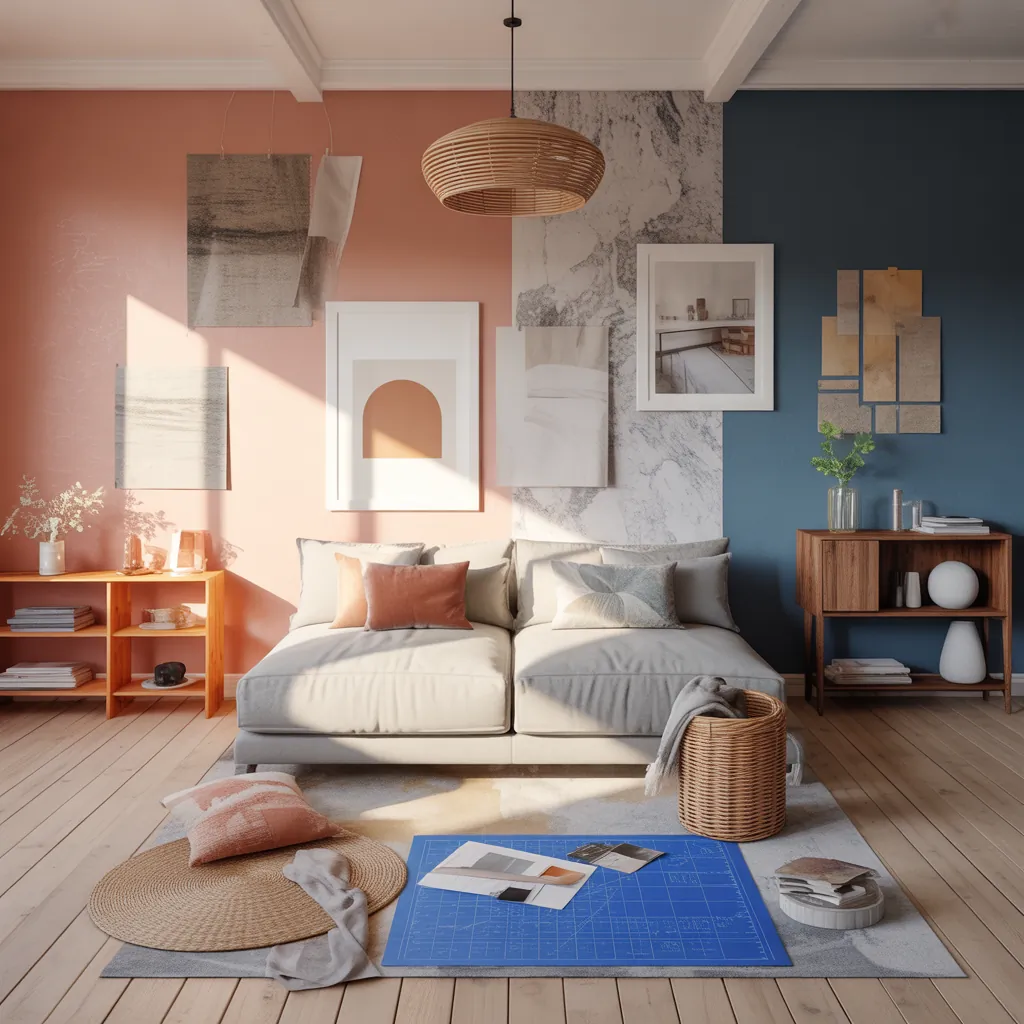Have you ever stood in a dated living room or echoey bedroom and thought, “This ceiling needs personality”? Whether you’re tackling a rental upgrade, calming a noisy nursery, or adding soft texture to a master suite, a fabric ceiling idea can be the easy, stylish solution you didn’t know you needed. In this guide I’ll walk you through practical DIY tips, step-by-step installation methods, design inspiration, and real-world advice so you can install a gorgeous fabric ceiling with confidence.
Why choose a fabric ceiling?
Fabric-draped ceilings create instant warmth, soften sound, and visually lower high ceilings for a cozier feel. Compared with drywall or suspended ceiling tiles, fabric is lightweight, budget-friendly, and highly customizable. Popular applications include bedroom canopies, living room drapery, restaurant-style swag ceilings, and acoustic fabric panels for home theaters.
Benefits at a glance
- Affordable transformation without major construction
- Improves acoustics and reduces echo
- Quick to install and reversible—great for renters
- Huge design flexibility: colors, prints, translucency
A simple step-by-step DIY fabric ceiling idea (beginner-friendly)
This method uses curtain tracks or a basic battens-and-staples approach—no professional tension systems required.
Materials and tools
- Fabric: lightweight cotton voile, linen, or polyester blend (measured to cover ceiling + drape)
- Curtain track or ceiling-mounted wooden battens
- Staple gun, screws, anchors, or curtain track clips
- Measuring tape, ladder, pencil, scissors, sewing machine (optional)
- Fire-retardant spray (if needed), fabric iron
Step-by-step installation
- Measure the ceiling area and add extra fabric length for swag or pleats (typically 20–40% extra for draping).
- Choose layout: full ceiling cover, panels, or a central canopy. Sketch placement of tracks or battens.
- Install curtain tracks around the perimeter or attach wooden battens to studs using anchors for heavy fabric.
- Hem or finish fabric edges if needed. Create gathered panels by sewing a casing or using pleated clips.
- Clip or staple fabric to the track/batten. Smooth pleats and arrange swags evenly. Use safety pins or stitches to lock folds into place.
- Test lighting and ventilation. Add LED rope lights above fabric for a soft glow or secure recessed fixtures with proper clearances.
Advanced options: stretch fabric ceilings, acoustic panels, and insulation
If you want a more permanent or professional look, consider a stretch fabric ceiling system or modular acoustic fabric panels. These require a channel or track anchored to the perimeter and a heated, tensioned fabric membrane. They provide a smooth, seamless finish and can hide wiring or ducts while improving room acoustics and thermal performance.
When to hire a pro
- If you need to integrate recessed lighting or HVAC penetrations
- When using heavy, flame-retardant fabrics that require special fasteners
- For large commercial areas or complex curved ceilings
Design ideas and inspiration
Fabric ceiling ideas can be tailored to your style. Here are some popular looks and where they work best:
- Boho canopy: Sheer voile draped diagonally across a bedroom for a dreamy, romantic vibe.
- Striped panels: Long fabric panels in alternating colors for a modern, tent-like living room ceiling.
- Acoustic tiles: Fabric-wrapped sound-absorbing panels for a home theater or noisy open-plan kitchen/dining area.
- Printed statement: Large-scale botanical or geometric print fabric to make the ceiling a focal point in a small dining nook.
Lighting and color tips
- Use translucent fabrics with backlighting for a soft, ambient glow.
- Lighter fabrics visually enlarge a room; darker fabrics create intimacy.
- Match fabric tones to curtains, rugs, or accent pillows for a cohesive palette.
Practical considerations and safety
Before you start, check local building codes and fire safety regulations—some jurisdictions require flame-retardant materials in certain spaces. Ensure proper airflow: avoid sealing off vents, and consider moisture-resistant fabrics in bathrooms. Use anchors rated for ceiling loads and never overload a single attachment point.
Maintenance and longevity
- Dust regularly with a vacuum brush attachment or soft broom.
- Spot clean according to fabric care instructions; removable panels are easiest to launder.
- Expect lightweight drapery to last several years; quality linen or polyester blends hold up best over time.
Costs and time estimates
Basic DIY draped ceilings can be done in a weekend for under $200, using affordable fabrics and curtain tracks. Upgraded stretch systems or acoustic installations range from $500–$2,000+ depending on size and materials. Always price fabric by the linear yard, and factor in hardware and any professional labor if needed.
Fabric ceiling idea: Real-world project examples
Here are two quick case studies to spark your own installation:
Nursery canopy on a budget
- Used lightweight muslin, a single ceiling hook, and a round hoop to create a dreamy canopy over the crib.
- Took 90 minutes, cost under $50, and added acoustic dampening for calmer naps.
Open-plan living room with acoustic panels
- Installed fabric-wrapped foam panels in a grid across the ceiling to reduce echo between the living and kitchen areas.
- Professional install, about $1,200 for a 200 sq ft area; instantly improved TV clarity and conversation comfort.
Frequently Asked Questions
1. Is a fabric ceiling safe around lights?
Yes—if you follow safety guidelines. Keep fabric away from high-heat fixtures and use LED lighting which emits much less heat. For recessed or surface-mounted lights, maintain manufacturer-recommended clearances and consider using heat-resistant materials or a professional installer.
2. Can I install a fabric ceiling in a rental?
Absolutely. Use removable tracks, hooks, or lightweight battens that don’t damage paint. Removable solutions let you restore the original ceiling when you move out and still achieve a dramatic makeover while you live there.
3. What fabric is best for a ceiling to reduce echo?
Fabric-wrapped acoustic panels or dense woven fabrics over foam cores work best. Natural fibers like heavy linen or cotton blends help, but for real sound control choose materials designed for acoustic absorption.
Conclusion: Try a fabric ceiling idea in your next room refresh
A fabric ceiling idea can instantly change the mood, acoustics, and style of a room without major construction. Whether you try a renter-friendly canopy, a DIY draped ceiling with curtain tracks, or invest in stretch fabric or acoustic panels, there are solutions at every budget and skill level. Ready to get started? Browse project plans on our DIY projects page, or find complementary inspiration for living spaces on our home design ideas and kitchen upgrades pages. Share your measurements and photos and I’ll help you choose the right fabric and method—let’s make your ceiling a design feature, not an afterthought.
Call to action: Start your fabric ceiling project this weekend—pick your fabric, plan your layout, and transform your space with one creative DIY upgrade.



